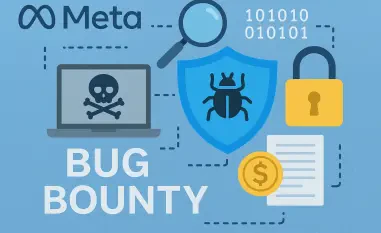In late September of this year, a massive wave of extortion emails swept across global digital landscapes, targeting Oracle E-Business Suite environments with chilling precision, and thrusting cybersecurity into the spotlight. Hundreds of compromised accounts were weaponized to distribute threatening messages, claiming data theft and demanding ransom payments, while raising urgent questions about the identity and motives of the perpetrators. Could the notorious Clop extortion group, infamous for its ruthless ransomware tactics, be orchestrating this operation? This report delves into the intricacies of this high-stakes cyber threat, exploring the potential links to Clop, the challenges of attribution, and the broader implications for industry security practices.
Understanding the Global Extortion Email Campaign
The extortion email campaign that emerged recently represents a significant escalation in cybercriminal tactics. Identified as a high-volume operation, it specifically targets organizations using Oracle E-Business Suite, a widely adopted enterprise resource planning system. Attackers, leveraging hundreds of hijacked accounts, have flooded inboxes with menacing messages asserting that sensitive data has been stolen and will be exposed unless payments are made. This brazen approach underscores the audacity of modern cybercriminals in exploiting digital vulnerabilities on a massive scale.
Beyond the sheer volume of emails, the scope of this threat lies in its potential to disrupt critical business operations. The use of compromised accounts for mass distribution amplifies the campaign’s reach, creating a pervasive sense of urgency among targeted entities. Many organizations, caught off guard by the sophistication of this attack, face the daunting task of verifying whether their systems have indeed been breached. The psychological impact of such threats cannot be understated, as fear of data exposure drives rapid, often rash, decision-making.
This incident fits into a larger pattern of financially motivated cybercrime that continues to plague industries worldwide. Extortion campaigns like this one exploit not just technical weaknesses but also human emotions, banking on panic to extract payments. As cybercriminals refine their methods, blending technical prowess with psychological manipulation, the cybersecurity community must grapple with an evolving battlefield where trust and digital integrity hang in the balance.
Investigating the Alleged Involvement of Clop
Connections to Clop and Other Threat Groups
Central to the investigation of this email campaign is the potential involvement of the Clop extortion group, a name synonymous with devastating ransomware attacks. The attackers have included contact details in their emails that trace back to the Clop data leak site, a platform historically used to shame non-paying victims by publishing stolen data. This deliberate reference suggests either direct affiliation with Clop or a calculated attempt to borrow its notorious reputation for added menace.
Further complicating the picture is the overlap with FIN11, another financially motivated threat group known for similar extortion tactics. According to Charles Carmakal, CTO at Mandiant, at least one compromised account used in the campaign bears ties to FIN11, raising the possibility of collaboration or shared resources among criminal entities. However, it’s equally plausible that the perpetrators are mimicking the branding of established groups like Clop to heighten fear and pressure victims into compliance, a tactic increasingly observed in cybercrime circles.
This blending of identities underscores a troubling trend where the lines between distinct threat actors blur. Whether the campaign is genuinely orchestrated by Clop or simply exploits its fearsome legacy, the association serves a clear purpose: to intimidate targets by invoking a name linked to high-profile breaches. Such strategies reveal how reputation, as much as technical capability, has become a weapon in the arsenal of modern cybercriminals.
Evidence and Uncertainties
Despite the alarming nature of the emails, concrete evidence supporting the attackers’ claims of data theft remains elusive. Reports from Google Threat Intelligence and Mandiant indicate that no verifiable proof of compromised data has surfaced as of early October this year. This absence of substantiation casts doubt on whether the perpetrators possess the information they claim to hold, suggesting the campaign might rely more on bluffing than actual breaches.
The psychological tactics at play are evident in the attackers’ use of Clop’s brand recognition to instill fear. By aligning themselves with a group known for executing sophisticated attacks, the perpetrators aim to create a sense of inevitability among victims, pushing them toward payment as a perceived lesser evil. This manipulation of perception highlights how cyber extortion increasingly targets the mind as much as the machine, exploiting uncertainty as a pressure point.
Until tangible evidence emerges, the true extent of the threat remains unclear. Organizations must navigate a landscape where the line between credible danger and opportunistic deception is thin. This uncertainty necessitates a cautious approach, balancing the need to respond to potential risks with the risk of overreacting to unproven claims, a dilemma that continues to challenge cybersecurity professionals.
Challenges in Attribution and Threat Assessment
Attributing this email campaign to a specific group like Clop proves to be a complex endeavor due to the deliberate obfuscation tactics employed by attackers. Cybercriminals frequently adopt the personas of well-known entities to confuse investigators and amplify their perceived threat level. This practice of identity borrowing creates a murky environment where distinguishing between genuine operatives of a group and mere imitators becomes a significant hurdle.
Another layer of difficulty lies in separating authentic threats from opportunistic scams, especially in high-stakes cybersecurity scenarios. The current campaign exemplifies how attackers can generate widespread alarm with minimal evidence, capitalizing on the fear of data exposure to drive ransom demands. For organizations, discerning whether a threat warrants immediate action or is merely a hollow intimidation tactic requires meticulous analysis and resources that may not always be readily available.
To mitigate these challenges, organizations are encouraged to adopt proactive strategies for risk assessment. Monitoring for suspicious activity, such as unusual login attempts or unauthorized access to sensitive systems, serves as a critical first line of defense. Additionally, conducting thorough investigations into potential intrusions can help differentiate between credible threats and bluffs, enabling more informed decision-making in the face of uncertainty.
Responses from Google, Mandiant, and Oracle
Google, Mandiant, and Oracle have taken a unified stance in addressing the extortion email campaign, emphasizing collaboration and vigilance. Google Threat Intelligence has been at the forefront, analyzing the scope of the attack and tracking the use of compromised accounts for email distribution. Their efforts focus on identifying patterns that could reveal the attackers’ origins or confirm the validity of their claims, providing actionable insights to affected parties.
Mandiant complements these efforts by delving into the potential connections with known threat groups like Clop and FIN11. Their expertise in tracking financially motivated cybercrime offers a deeper understanding of the tactics at play, helping to contextualize the campaign within broader trends. Meanwhile, Oracle has confirmed issuing alerts to E-Business Suite customers who received the threatening emails, while stressing that no evidence of internal breaches has been detected within their systems.
All three entities advocate for strong cybersecurity hygiene as a cornerstone of defense. Recommendations include promptly applying security patches, closely monitoring access logs for anomalies, and maintaining open communication with customers to ensure transparency. Their collaborative investigations continue to evolve, aiming to uncover the full scope of the threat while reinforcing the importance of preparedness against such sophisticated attacks.
Future Implications for Cybersecurity Practices
This extortion campaign sheds light on broader trends in financially motivated cybercrime, where attackers continuously adapt their methods to exploit emerging vulnerabilities. The shift toward combining technical exploits with psychological coercion signals a new era of hybrid threats that challenge traditional defense mechanisms. As extortion tactics grow more nuanced, industries must anticipate an increase in campaigns that prey on fear as much as on system weaknesses.
The incident also underscores the need for organizations to overhaul security protocols to address both technical and human elements of cyber threats. Readiness against such multifaceted attacks requires not only robust software defenses but also employee training to recognize and resist manipulation. Strengthening incident response plans to handle extortion scenarios will be critical in minimizing potential damage and maintaining operational continuity.
Looking ahead, enhanced threat intelligence sharing and proactive defense mechanisms stand out as key areas of focus. Collaborative platforms that enable real-time information exchange between organizations and cybersecurity experts can help preempt attacks before they escalate. By fostering a culture of anticipation rather than reaction, the industry can build resilience against the evolving landscape of digital extortion and related cybercrimes.
Conclusion
Reflecting on the findings of this report, the global extortion email campaign targeting Oracle E-Business Suite environments revealed a sophisticated blend of technical and psychological tactics that rattled the cybersecurity community. Investigations by Google, Mandiant, and Oracle uncovered no verified breaches, yet the credible risk posed by the attackers’ strategies demanded urgent attention. The potential links to Clop and FIN11 highlighted the murky waters of threat attribution, where deception often masked true intent.
Moving forward, organizations need to prioritize actionable steps to fortify their defenses. Implementing rigorous monitoring systems to detect unauthorized access early offers a practical starting point. Investing in employee awareness programs to counter psychological manipulation emerges as equally vital. By fostering partnerships for threat intelligence sharing, companies can stay ahead of emerging risks, turning lessons from this campaign into a blueprint for stronger cybersecurity resilience.













